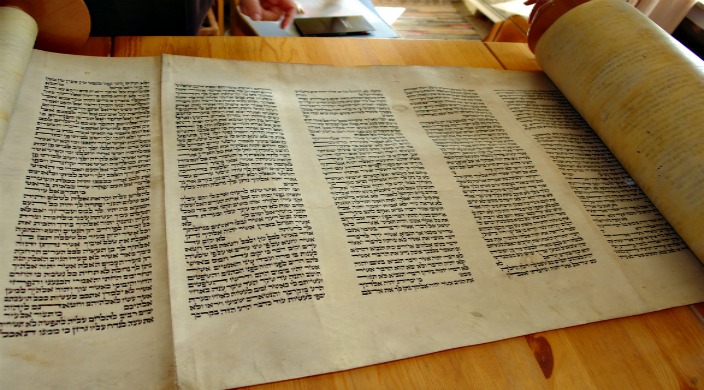Imagine stepping into a bustling marketplace overflowing with vibrant colors, fragrant spices, and lively chatter. It’s a symphony of sights and sounds, where ancient traditions intertwine with modern life. Now, imagine that very marketplace as a metaphor for Judaism, brimming with rich history, complex rituals, and an ongoing dialogue between past and present. At the heart of this marketplace are two fundamental texts, the Torah and the Talmud, often mistaken as one. But each holds a unique place, shaping Jewish life and illuminating the path from generation to generation.

Image: myemail.constantcontact.com
Today, we’ll embark on a journey to unravel the tapestry of Judaism, exploring the profound difference between the Torah and the Talmud. We’ll delve into their origins, uncover their core principles, and discover how they continue to influence Jewish thought and practice. By understanding this distinction, you’ll gain a deeper appreciation for the vibrant spirit of Judaism, its enduring values, and the profound impact it has on the lives of millions across the globe.
The Torah: The Foundation
The Torah, meaning “teaching” or “instruction” in Hebrew, is the first five books of the Hebrew Bible, also known as the Pentateuch. It’s considered by Jews to be the foundation of their faith, containing the core tenets of Jewish law, ethics, and history. Think of it as a blueprint, laying down the groundwork for Jewish life.
From Creation to Covenant: Stories that Shaped a Nation
The Torah narrates the creation of the world, recounts the stories of patriarchs and matriarchs like Abraham, Isaac, and Jacob, and ultimately culminates in the revelation of the Ten Commandments at Mount Sinai. These stories are not merely historical accounts; they are imbued with profound meaning and serve as a moral compass for generations. They teach us about God’s relationship with humanity, the importance of ethical behavior, and the enduring power of faith.
More Than a Book: The Torah’s Influence
The Torah is far more than a collection of stories. It contains specific laws and commandments governing every aspect of life, from dietary regulations to the Sabbath observance. These laws, known as the Halakha, are intricately woven into the fabric of Jewish life, shaping everything from daily prayers to the design of synagogues.

Image: www.differencebetween.net
The Talmud: The Commentary
While the Torah provides the foundational blueprint, the Talmud serves as a comprehensive commentary, a vibrant exploration of Jewish law and thought. It’s not a single book, but rather a vast collection of ancient Rabbinic discussions, interpretations, and debates about the Torah. Imagine it as a bustling marketplace of ideas, where scholars from ancient times engage in lively discourse, meticulously interpreting the Torah and its application to everyday life.
Rabbinic Wisdom: The Power of Dialogue
The Talmud is a product of centuries of Rabbinic scholarship, dating back to the period after the destruction of the Second Temple in Jerusalem. It’s a testament to the enduring power of dialogue, where Jewish thinkers grapple with complex ethical dilemmas and legal questions, ultimately arriving at a consensus that shapes Jewish life.
A Living Document: The Talmud’s Enduring Legacy
One of the remarkable aspects of the Talmud is its ongoing relevance. It’s not merely a relic of the past, but a living document that continues to be studied, debated, and applied to contemporary issues. This ongoing dialogue ensures that Jewish law is not frozen in time, but remains flexible and adaptable to the ever-evolving needs of society.
From Torah to Talmud: A Continuing Journey
The relationship between the Torah and the Talmud is a beautiful dance between tradition and innovation, between an enduring foundation and evolving interpretations. The Torah serves as the bedrock, defining the core principles and practices of Judaism. Meanwhile, the Talmud provides a framework for understanding, applying, and adapting those principles to the nuances of real life.
A Deeper Understanding: The Key to Connection
By understanding the difference between the Torah and the Talmud, we gain a deeper appreciation for the complexity and richness of Jewish tradition. It’s a reminder that Judaism is not a static set of rules, but a dynamic and evolving system of thought and action, continually shaped by the wisdom of generations past.
Difference Between Talmud And Torah
Unlocking the Treasures Inside: The Path Forward
For those eager to explore the depths of Jewish tradition, the journey begins with the Torah. It’s the starting point, the foundation upon which a lifetime of learning and growth can be built. From there, the Talmud offers a treasure trove of insights and discussions, a vibrant testament to the power of dialogue and the enduring relevance of Jewish law and thought.
Ultimately, the Torah and the Talmud are not merely texts; they are gateways to a world of meaning, purpose, and connection. They offer a roadmap for navigating life’s complexities, a source of inspiration and guidance, and a testament to the enduring power of faith and tradition. So, delve into the pages, engage in the ongoing dialogue, and discover the profound beauty of Judaism’s timeless wisdom.





